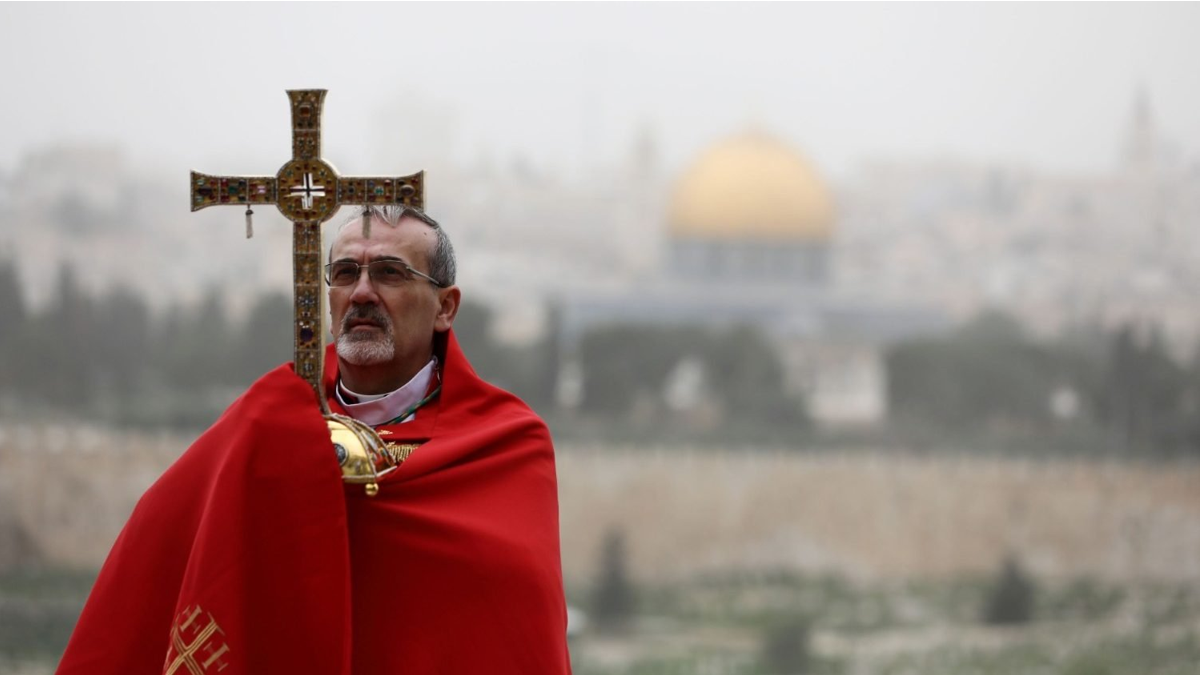Meditation Of His Beatitude Patriarch Cardinal Pierbattista Pizzaballa: IX Sunday Of Ordinary Time
Below you can find the Meditation of His Beatitude Patriarch Cardinal Pierbattista Pizzaballa, Latin Patriarch of Jerusalem, for the IX Sunday of Ordinary Time, Sunday 2 June 2024.
Mk. 2:23-3:6
Today we resume the journey of the Sundays of Ordinary Time and it immediately helps us to focus on the essentials of our relationship with the Lord.
Today's passage (Mk. 2:23-3:6), in fact, is composed of two distinct moments, taking place in two different places: the first is among the wheat fields where Jesus is walking with his disciples, while a group of Pharisees stand by and watch. The second is inside the synagogue: with him are no longer the disciples, but a man with a paralyzed hand and, again, a group of Pharisees.
There are several elements that make unity between the two passages.
The first is the Sabbath: the two episodes take place on the same day, and this day is a Sabbath.
The second is precisely the Pharisees, who are present in both moments, and the fact that in both episodes the Pharisees have the same attitude: in the first part, they see that the disciples are gathering ears of corn and point out that this is forbidden by the law on the Sabbath (Mk. 2:24); in the second, the evangelist Mark says explicitly that the Pharisees are watching (Mk. 3:2) to see if Jesus healed the man, to accuse him of transgressing the Sabbath.
So, we can say that the evangelist puts before us two points of view, two ways of looking.
They all look at the same events, but the Pharisees see one thing, Jesus sees another.
At the center of the Pharisees' gaze is the Sabbath, and the Sabbath is understood first and foremost as a law to be observed: you are not to do certain things, and if you do them, you transgress the law; therefore, somehow you get out of obedience to God and thus out of the covenant.
There is also some elements the Pharisees don't see: they don't see that the disciples are hungry, they don't see that the man with the withered hand urgently needs to be healed.
Jesus sees exactly the opposite.
At the center of his gaze is not a law to be observed, but people, with their needs and suffering. He seems to see only this, and nothing else.
And what he sees provokes him and puts him into action: he lets the disciples eat and heals the man in the synagogue. He does not sacrifice man to a law.
Not only that, Jesus also sees the Pharisees (Mark 3:5): he looks at them, then is both indignant and saddened by their attitude. What attitude?
It seems to me that the Gospel emphasizes two aspects: the first is the hardened heart; a heart unable to feel compassion. Jesus asks the man to put himself in the middle (Mk. 3:3), so that even the Pharisees might see him, so that even the Pharisees might learn that at the center is not a law but a person, but the Pharisees do not allow themselves to be moved by this man's pain.
The second is silence: Jesus questions them, but they remain silent (Mark 3:4). A hardened heart, in the end, is a heart unable to speak and, therefore, a heart unable to be, during the Sabbath, that is, in the Lord's day, in dialogue with Him…
This Meditation was originally published on the website of the Latin Patriarchate of Jerusalem. Please click here to read the full text.


